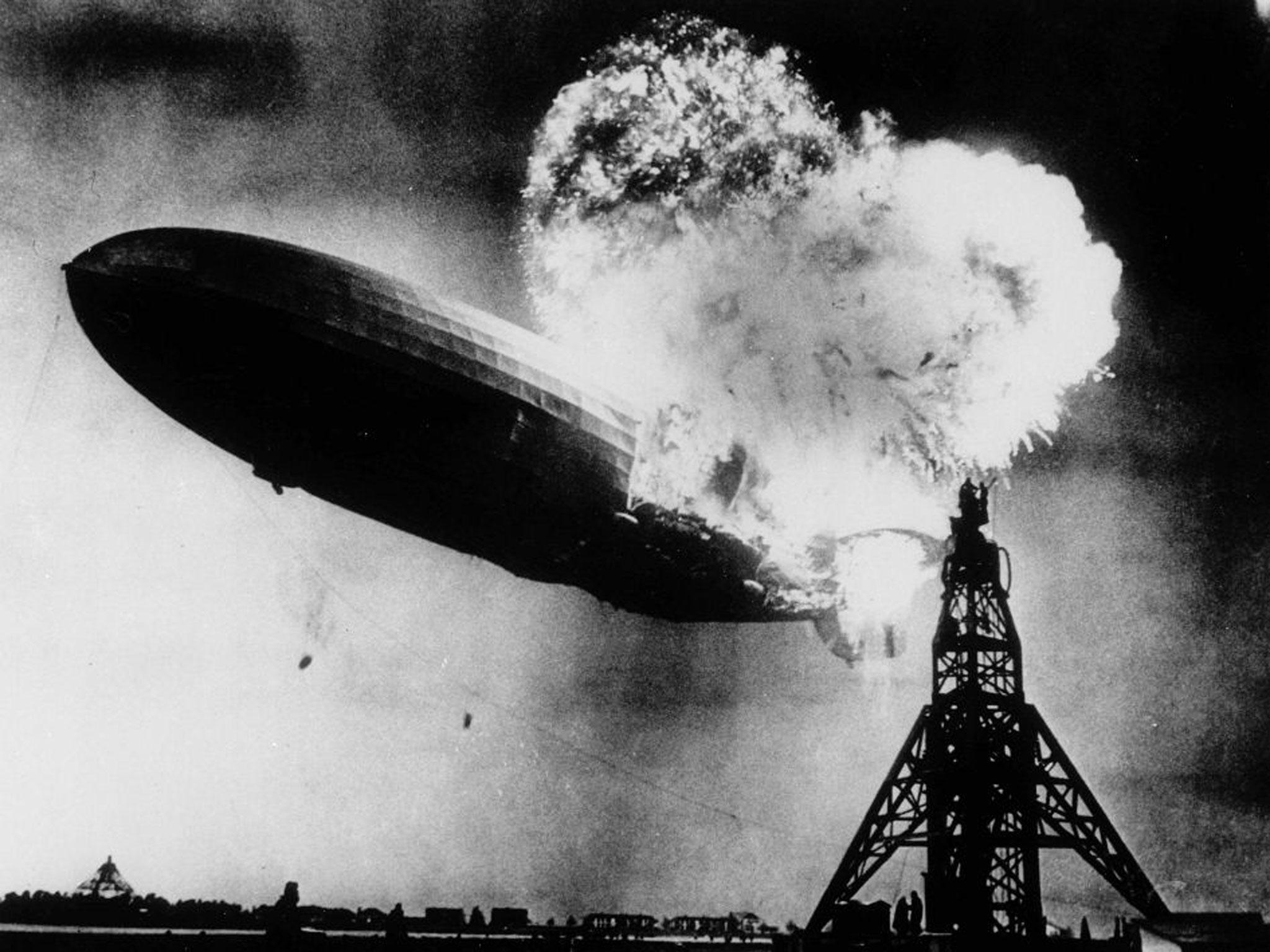Hindenburg mystery solved after 76 years
Scientists believe that a series of events sparked by static electricity lead to the 1937 explosion

The dream was a fleet of hydrogen-filled airships criss-crossing the globe, silvered hulls shining in the sunlight. And for a while the fantasy became reality, For the Hindenburg was the Concorde of its day – able to cross the Atlantic in about three days, twice as fast as going by sea.
With nearly 100 on board, the 245m airship was preparing to land at Lakehurst, New Jersey, on 6 May 1937, when the age of airship travel ended. In front of horrified onlookers, the Hindenburg exploded and plunged to the ground in flames. Thirty-five of those on board died.
Now, 76 years later, a team of experts claims to have solved one of the greatest mysteries of the 20th century: the real cause of the Hindenburg air disaster. And they name static electricity as the culprit.
Led by a British aeronautical engineer, Jem Stansfield, and based at the South West Research Institute in the US, the team blew up or set fire to scale models more than 24m long, in an attempt to rule out theories ranging from a bomb planted by a terrorist to explosive properties in the paint used to coat the Hindenburg.
Investigations after the disaster concluded that a spark had ignited leaking hydrogen gas, but could not agree on what caused the spark, or the leaking gas. Conspiracy theories took hold that the airship had been brought down by a bomb, or had been shot down from the ground. Through recreating different scenarios with mini-replicas, and studying archive footage of the disaster, along with eyewitness accounts, experts believe they have discovered what really happened.
Mark Heald was eight when he watched the Hindenburg coming in to land. He was watching from a distance and able to see what those closer to the airship couldn't – where the fire started. "Years later, my father realised that he should have volunteered testimony in some of the initial investigations, because we were probably in a rather unusual location. As I recall, we were seeing it from pretty much a side view. We saw a little bit of blue fire just forward of the vertical rudder, the upper rudder. It hung right to the top ridge."
In a documentary being broadcast on Channel 4 on Thursday, experts reveal the sequence of events that triggered the explosion. The airship had become charged with static as a result of an electrical storm. A broken wire or sticking gas valve leaked hydrogen into the ventilation shafts, and when ground crew members ran to take the landing ropes they effectively "earthed" the airship. The fire appeared on the tail of the airship, igniting the leaking hydrogen.
"I think the most likely mechanism for providing the spark is electrostatic," said Mr Stansfield. "That starts at the top, then the flames from our experiments would've probably tracked down to the centre. With an explosive mixture of gas, that gave the whoomph when it got to the bottom."
The airship historian Dan Grossman agrees. "I think that's exactly what happened. I think you had massive distribution of hydrogen throughout the aft half of the ship; you had an ignition source pull down into the ship, and that whole back portion of the ship went up almost at once."
Join our commenting forum
Join thought-provoking conversations, follow other Independent readers and see their replies
Comments